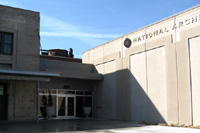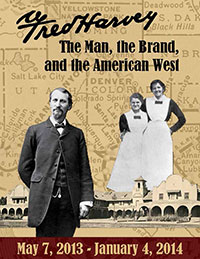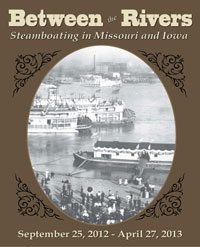 When I researched the 1840s for my Oregon Trail novels, I started with the big picture—the general route the emigrants took, their modes of transportation, what was going on in the East at the time, etc. Much of this research never made its way into my early drafts, but I had a sense of the era about which I was writing.
When I researched the 1840s for my Oregon Trail novels, I started with the big picture—the general route the emigrants took, their modes of transportation, what was going on in the East at the time, etc. Much of this research never made its way into my early drafts, but I had a sense of the era about which I was writing.
As I plodded through the plotting of the books, paragraph by paragraph, page by page, I often had to stop and research a particular point—the flora and fauna around a particular creek, how high the cliffs were above a particular campsite, how long it took to travel each segment of the journey. To use the old idiom, I moved from the forest into the trees. (Speaking of trees, what species grew on the plains? How high was the tree line in the mountains? How thick were the tree trunks in the Cascades? I had to look up each of these facts while I was writing.)
No point was too minor to research. If I found an answer, I worked it into the text, though it might be discarded in the next draft as too much detail. If I couldn’t find an answer, I worked around the issue, or left a blank to fill in later. Almost every hole is plugged now in one book, which has been through several drafts. But I’ve only done one draft of the second novel in the series, so it still has quite a few sketchy bits.
In researching my way detail by detail, tree by tree (bird by bird, as Anne Lamott would say), I often lost sight of the grandeur of the scenery, of the strength and courage of our forebearers who headed off into the wilderness. They knew far less about the flora and fauna, the heights and distances they would encounter than I could discover in a few seconds on Google.
Last week I had some of the big picture brought back to me in an evening at the National Archives in Kansas City. This branch office of the federal National Archives currently has two exhibits on display that relate to the history of the West—Between the Rivers: Steamboating in Missouri and Iowa is showing until October 26, 2013, and Fred Harvey: The Man, the Brand, and the American West will be available until January 4, 2014. I strongly encourage readers near Kansas City to make time to see these exhibits.
 Neither exhibit relates directly to my research on the Oregon Trail. Fred Harvey did not form his partnership with the Santa Fe Railroad until 1876, when he opened the first Harvey House in Topeka, Kansas. This was more than thirty years after my fictional emigrants trekked to Oregon in 1847. There were no railroads in the West in 1847, so train travel did not factor into my novels.
Neither exhibit relates directly to my research on the Oregon Trail. Fred Harvey did not form his partnership with the Santa Fe Railroad until 1876, when he opened the first Harvey House in Topeka, Kansas. This was more than thirty years after my fictional emigrants trekked to Oregon in 1847. There were no railroads in the West in 1847, so train travel did not factor into my novels.
There were steamboats on the Mississippi, Missouri and Ohio Rivers in 1847, and so the steamboat exhibit at the National Archives was more pertinent to my research. One of my characters took a steamboat down the Ohio and up the Missouri to get to Independence to begin his wagon travel to Oregon. I had researched where the steamboat docks were on the Missouri and how long it took to travel between points.
 My research on steamboat travel took me so far into the trees that I lost the big picture of the impact of steam travel on the development of the West. I regained the larger perspective when I attended a presentation on September 11, 2013, by Dr. Christopher Gabel, entitled You Can’t Get There from Here: Riverboats, Railroads, and the Development of the West. Dr. Gabel has taught at the U.S. Army Command and General Staff College at Fort Leavenworth since 1983. He teaches classes on general military history, the Civil War, and World War II, conducts staff rides to Civil War battlefields, and has written about Civil War railroads. What fascinated me about his presentation was how he described the economic impact of first steamboats and then railroads on the U.S. and western expansion.
My research on steamboat travel took me so far into the trees that I lost the big picture of the impact of steam travel on the development of the West. I regained the larger perspective when I attended a presentation on September 11, 2013, by Dr. Christopher Gabel, entitled You Can’t Get There from Here: Riverboats, Railroads, and the Development of the West. Dr. Gabel has taught at the U.S. Army Command and General Staff College at Fort Leavenworth since 1983. He teaches classes on general military history, the Civil War, and World War II, conducts staff rides to Civil War battlefields, and has written about Civil War railroads. What fascinated me about his presentation was how he described the economic impact of first steamboats and then railroads on the U.S. and western expansion.
Dr. Gabel estimates that steamboat travel is about six times more efficient than mule travel, in terms of the energy it takes to move a ton of goods one mile. That six-fold improvement in shipping costs revolutionized the marketing flows of goods along river routes between the upper Midwest and the South.
Rail travel is not quite as efficient as river travel, but the steam locomotive was still vastly more efficient than pack animals. Moreover, railroads can be built where rivers do not flow. With the advent of rail travel, for the first time you could get there from here . . . you could get almost anywhere, in fact. Particularly across Kansas, which is flat.
The mountains were more difficult, but even they were eventually conquered by rail. And railroads brought the end of the Oregon Trail.
Very little in Dr. Gabel’s presentation will find its way into my novels. But I appreciated the opportunity to reflect on how my little piece of historical fiction fits into a bigger context. As my characters board their steamboats in St. Louis, Oregon City, and Sacramento, I will think of how they depict our nation’s expansion and economic complexity.
When have you realized how something you are working on fits into a bigger context?



